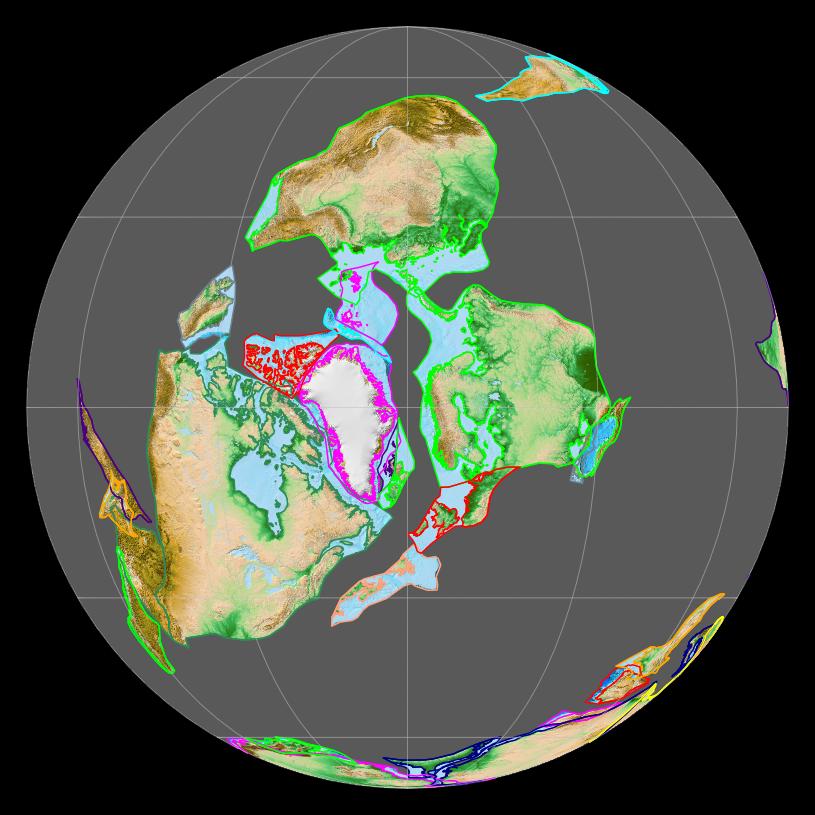Buildwas Formation on:
[Wikipedia]
[Google]
[Amazon]
 The Buildwas Formation (''Bw'', ''BUI''), formerly called Wenlock Shale and Buildwas Beds, is a
The Buildwas Formation (''Bw'', ''BUI''), formerly called Wenlock Shale and Buildwas Beds, is a
-
at
 The Buildwas Formation (''Bw'', ''BUI''), formerly called Wenlock Shale and Buildwas Beds, is a
The Buildwas Formation (''Bw'', ''BUI''), formerly called Wenlock Shale and Buildwas Beds, is a geologic formation
A geological formation, or simply formation, is a body of rock having a consistent set of physical characteristics ( lithology) that distinguishes it from adjacent bodies of rock, and which occupies a particular position in the layers of rock exp ...
in Shropshire
Shropshire (; alternatively Salop; abbreviated in print only as Shrops; demonym Salopian ) is a landlocked historic county in the West Midlands region of England. It is bordered by Wales to the west and the English counties of Cheshire to ...
, England
England is a country that is part of the United Kingdom. It shares land borders with Wales to its west and Scotland to its north. The Irish Sea lies northwest and the Celtic Sea to the southwest. It is separated from continental Europe ...
. It preserves fossils
A fossil (from Classical Latin , ) is any preserved remains, impression, or trace of any once-living thing from a past geological age. Examples include bones, shells, exoskeletons, stone imprints of animals or microbes, objects preserved ...
dating back to the Silurian
The Silurian ( ) is a geologic period and system spanning 24.6 million years from the end of the Ordovician Period, at million years ago (Mya), to the beginning of the Devonian Period, Mya. The Silurian is the shortest period of the Paleozoi ...
period. The formation is the defining formation of the Sheinwoodian
In the geologic timescale, the Sheinwoodian is the age of the Wenlock Epoch of the Silurian Period of the Paleozoic Era of the Phanerozoic Eon that is comprehended between 433.4 ± 0.8 Ma and 430.5 ± 0.7 Ma (million years ago), approximately. ...
age of the Wenlock epoch, the Middle Silurian.
Description
The Buildwas Formation comprises olive-green and grey calcareous mudstones and nodular to lenticular calcareous mudstones andargillaceous
Clay minerals are hydrous aluminium phyllosilicates (e.g. kaolin, Al2 Si2 O5( OH)4), sometimes with variable amounts of iron, magnesium, alkali metals, alkaline earths, and other cations found on or near some planetary surfaces.
Clay mineral ...
limestone
Limestone ( calcium carbonate ) is a type of carbonate sedimentary rock which is the main source of the material lime. It is composed mostly of the minerals calcite and aragonite, which are different crystal forms of . Limestone forms wh ...
s with shell fragments present throughout. The basal part of the formation consists of grey-green rubbly mudstones, containing comminuted shell debris and overlies the mottled green, grey and purple mudstones of the Rubery Formation
Rubery is a village in the Bromsgrove District and a suburb of Birmingham in the counties of Worcestershire and West Midlands, England. It is from Birmingham city centre and a similar distance from Bromsgrove.
Rubery was built on a sandstone ...
with a thick transition in colour and upward decrease in number of hard siltstone beds. The top of the Buildwas Formation shows a gradational increase in thickness of beds and a number of limestone beds, where it grades into the overlying Barr Limestone Formation Barr may refer to:
Places
* Barr (placename element), element of place names meaning 'wooded hill', 'natural barrier'
* Barr, Ayrshire, a village in Scotland
* Barr Building (Washington, DC), listed on the US National Register of Historic Places ...
.
The thickness of the formation ranges from , with the thinnest outcrops occurring near Walsall
Walsall (, or ; locally ) is a market town and administrative centre in the West Midlands County, England. Historically part of Staffordshire, it is located north-west of Birmingham, east of Wolverhampton and from Lichfield.
Walsall is t ...
thickening towards Wenlock Edge. The type section of the formation was defined by Barrett in 1989 along the left (north) bank of Hughley Brook, southeast of Leasows Farm and northeast of Hughley Church.Buildwas Formation - BGS Lexicon of Named Rock Units-
British Geological Survey
The British Geological Survey (BGS) is a partly publicly funded body which aims to advance geoscientific knowledge of the United Kingdom landmass and its continental shelf by means of systematic surveying, monitoring and research.
The BGS he ...
The formation has provided fossils of '' Eodictyonella capewellii''.Buildwasat
Fossilworks
Fossilworks is a portal which provides query, download, and analysis tools to facilitate access to the Paleobiology Database, a large relational database assembled by hundreds of paleontologists from around the world.
History
Fossilworks was cre ...
.org
See also
*List of fossiliferous stratigraphic units in England
See also
* Lists of fossiliferous stratigraphic units in Europe
* Lists of fossiliferous stratigraphic units in the United Kingdom
References
*
{{DEFAULTSORT:Fossiliferous stratigraphic units in England
England
United Kingdom geology-rel ...
References
{{reflist, 2Further reading
* Bassett, M G, 1989. The Wenlock Series in the Wenlock area. 51-73 in "A global standard for the Silurian System". Holland, C H and Bassett, M G, (editors). National Museum of Wales, Gelogical series No.9, Cardiff. * A. D. Wright. 1981. The External Surface of ''Dictyonella'' and of other Pitted Brachiopods. Palaeontology 24(3):443-481 * Basset, M G, 1974. Review of the stratigraphy of the Wenlock Series of the Welsh Borderlands and South Wales. Palaeontology, 17, 745-777. * Cocks, L R M, Holland, C H, Rickards, R B and Strachan, I, 1971. A correlation of Silurian rocks in the British Isles. Geological Society of London, Special Report No.1. * Butler, A J, 1937. On Silurian and Cambrian rocks encountered in a deep boring at Walsall, South Staffordshire, Geological Magazine, 74, 241-257. Geologic formations of England Silurian System of Europe Silurian England Mudstone formations Limestone formations Deep marine deposits Silurian southern paleotropical deposits Paleontology in England Much Wenlock